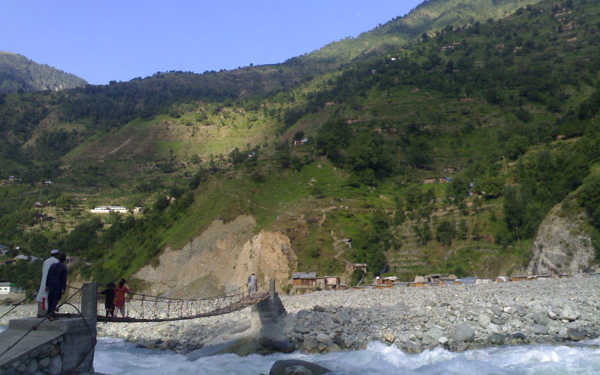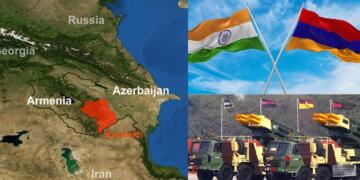The government of India is evaluating various options to give a befitting reply to Pakistan for its relentless support of cross-border terrorism which has recently taken the lives of 17 brave soldiers in Uri district of J & K in the most cowardly manner. While the “uninterrupted and uninterruptable dialogue” brigade will continue to argue the importance of immediate de-escalation of tensions, Government must need to react in a decisive manner to settle the score once and for all. One of the most powerful weapons which India possesses is its control over Indus Waters. In next few paragraphs, we will understand the Indus water treaty in details and find out how it can be used to choke Pakistan effectively.
What is Indus Water Treaty :
Indus water treaty is a water sharing agreement between India and Pakistan for the distribution of water from the Indus water system. The treaty was signed in 1960 between Indian Prime Minister Jawahar Lal Nehru and Pakistani president Md Ayub Khan. According to this treaty, the whole Indus system was divided into two zones, eastern and western, where all the waters of eastern rivers were allocated for the unrestricted use of India and all the water from western rivers were allocated to Pakistan. The Indus water treaty restricted India to build any infrastructure on these rivers which may interfere with the flow of water to Pakistan.
What is wrong with Indus Water treaty and who is the loser?
The distribution of water as stated in this Indus water treaty is grossly unequal. Only 20% of the total water system was allocated to India for use and rest 80% was allocated to the Pakistan. The mean flow of three eastern rivers – Ravi, Vyas & Satluj is only 33MAF while the mean flow of western rivers Indus, Jhelum & Chenab is 136MAF. Moreover, India was liable to pay 62 million pounds to Pakistan as a compensation for not giving eastern waters.
The defenders of Indus water treaty give several reasons like benevolence of Jawaharlal Nehru towards Pakistan, the requirement of eastern waters for semi-arid areas of Rajasthan and the successful international lobbying by Pakistan among others for this kind of heavily biased agreement.
However, between the two countries, Indian side of J & K remained as the biggest loser of this treaty. The prohibition of constructing dams on the western rivers limit the generation of hydro-electricity to a meager of 10% of the potential in the state. As per an estimate Kashmir is losing Rs 40000 Cr annually because of it.
If it is so wrong then why there is not much traction?
At several international forums, Indus water treaty has been hailed as the most successful water sharing agreement between a higher riparian and a lower riparian country. India’s dutiful adherence to this treaty, in spite of all those turbulences in the relation between the two nations, has kept it off the radar of India media.
On the other side, it remains a burning issue in Pakistani media. They always cry foul plays at India’s part and blame India for indulging in the construction of structures with malicious intentions. Several of the recent projects like Kishanganga and Aligarh were vehemently opposed by Pakistan and few of them reached to the arbitration panel. Jihadi forces in Pakistan distort these issues to create havoc in the agricultural belt in Pakistan thereby harnessing their support for terrorism in Kashmir.
How much is Pakistan dependent on Indus water?
Indus water system can be considered as a lifeline of Pakistan and Pakistan couldn’t hope for a better deal than Indus water treaty. Pakistan’s economy is heavily dependent on agriculture which contributes more than 25 % in the country’s GDP. Agriculture is also the largest employer in Pakistan where more than 50% workforce is still engaged with the Agriculture. Due to the lack of another mechanism, Pakistan uses 93 percent of the river water for irrigation.
Pakistan has been categorized a dry country with an average rainfall of less than 250mm/year. As per a report, Pakistan’s water demand in 2025 is expected to rise to 340bcm against the 240bcm showing a deficit of 100bcm per year. Hence, any alteration in the release of Indus water will directly affect more than two millions of acres of agricultural land in Pakistan. This will further have a cascading effect in already ailing Pakistan’s economy which will elevate food inflation and leave the country reeling under severe economic stress.
How can India unsettle Pakistan while still obeying the Indus Water treaty?
India has been more than generous in the execution of the Indus water treaty. The Indus water treaty allows India to construct storage facilities of 3.6 MAF on western waters. India has not built any construction facility so far. Any movement on that front will be enough to rattle Pakistan. Moreover, the treaty permits India to irrigate 1.32million acres of its agricultural land using western waters. India is currently irrigating only 0.8 million acres out of that. Apart from unused western waters, at least 2-3 MAF of eastern water flows to Pakistan unaccounted and unutilized. These additional tapping of Indus water in Indian side will add more stress to the water received by Pakistan.
On what basis can India scrap the whole Indus water treaty?
There is no doubt that Indus water treaty is totally unjustified from India’s point of view. Also, there is no exit clause in the treaty thus prohibiting any abrogation. However, there are few grounds on which India abstain to comply with the treaty and ask for re-negotiation as below:
- The fundamental of the International law is the absolute sovereignty of every nation against all others, within its own territory. More relevant examples of this are the resolution of the dispute between US & Mexico over River rio and recent rejection of arbitration court verdict by China in south china sea. The US also pulled out of the ABM treaty citing similar reasons. India can very well cite the reason for pulling out of treaty as the protection of its sovereignty from its terrorist neighbour.
- The global warming is changing the demographics of the region. A report on the same has warned of the melting glacier that could threaten the livelihood of nearly 10 million Indian population. The water shortage in the northern state of India like Punjab & Haryana is becoming acute. As India has the upper riparian sovereign right over the Indus water, it can very well convince the International diaspora for the renegotiation of half a century old Indus water treaty with Pakistan.
- As already mentioned that the J & K is the worst affected state due to Indus water treaty. A consensus can be built inside and outside the state to demand their right to the water. India can prove the reluctance of Pakistan in terms of the welfare of J & K which will help in spreading distrust of J & K population towards Pakistan.
Conclusion
The opening paragraph of the 1960 treaty reads that in the spirit of goodwill and friendship both of the countries oblige by the clauses of this treaty. There is no friendship left between two nations and the goodwill can’t always be one-sided. A tactical measure like this will hit where it matters most. India currently has at least 30 days of storage capacity which can be exercised in reducing or oversupplying of Indus water in Pakistan plains. Pakistan must realize that it needs to work towards establishing peace in the region or ready to perish.
http://www.indiaenvironmentportal.org.in/files/book_WaterSecurity.pdf
http://www.ipripak.org/india-re-thinking-indus-waer-treaty/
http://www.waterpakistan.com/impact-of-indus-watr-treaty-on-pakistan-economy-a-student-report/


































